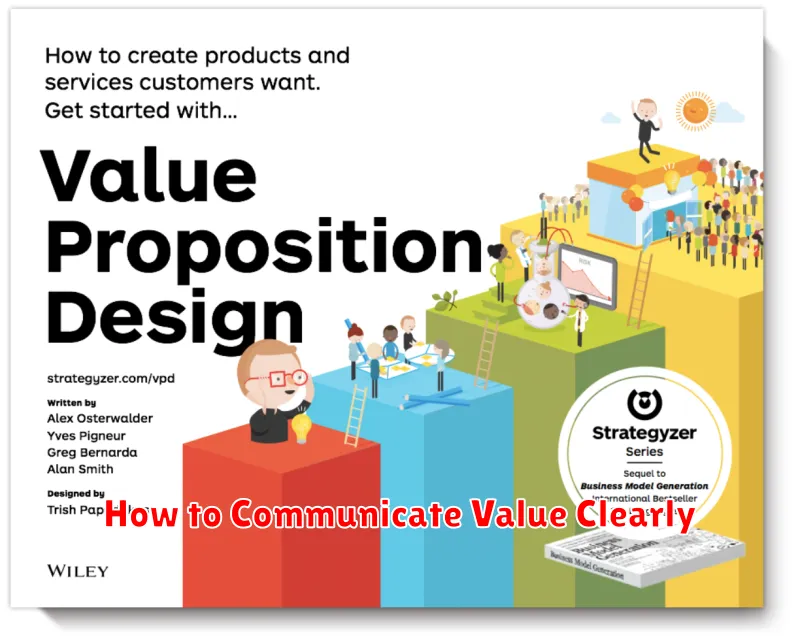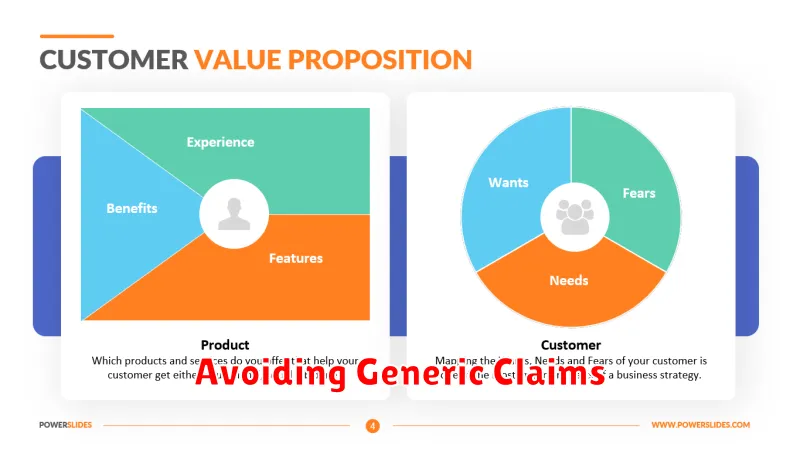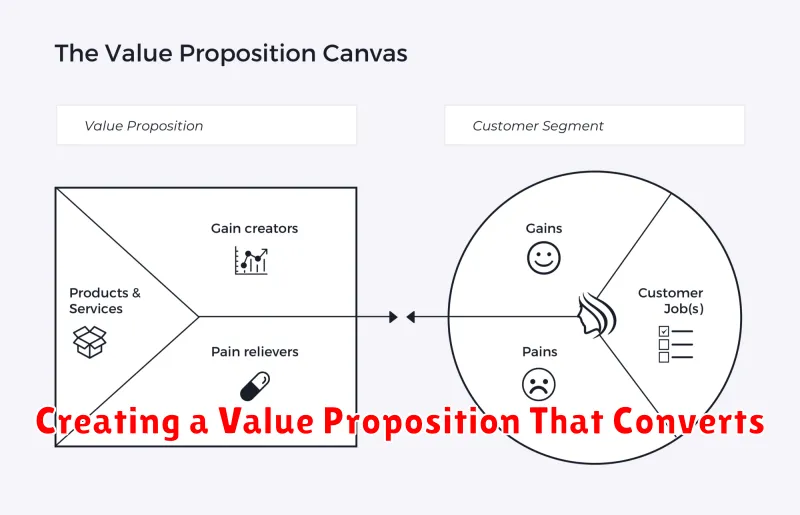In today’s competitive market, a compelling value proposition is crucial for any business seeking to convert prospects into loyal customers. A strong value proposition clearly articulates the unique benefits your product or service offers, differentiating you from the competition and demonstrating why customers should choose you. This article will delve into the essential elements of crafting a high-converting value proposition that resonates with your target audience and drives meaningful results. We will explore proven strategies for identifying your key differentiators, understanding your customer’s needs, and communicating your value in a concise and persuasive manner.
Developing a value proposition that converts goes beyond simply listing features. It requires a deep understanding of your target market’s pain points and desires. By focusing on the value you deliver and how it solves a specific problem for your customers, you can create a value proposition that truly captivates. This article will provide a practical framework for crafting a value proposition that not only attracts customers but also motivates them to take action. Learn how to articulate your value clearly, concisely, and persuasively, ultimately leading to increased conversions and business growth.
What Is a Value Proposition?
A value proposition is a clear and concise statement that explains what benefit a customer will receive by purchasing your product or service. It communicates the unique value you offer and why it’s superior to the competition.
A strong value proposition should answer the following questions:
- What problem does your product/service solve?
- What benefit does it provide?
- Why should customers choose you over competitors?
Essentially, it’s a promise of value to be delivered and a belief from the customer that value will be experienced.
Elements of a Strong Value Proposition
A compelling value proposition clearly communicates the benefits customers receive by choosing your product or service over the competition. It should be concise and easily understood.
Key elements include a clear identification of your target audience and their pain points. Address how your offering provides a unique and desirable solution to those problems.
Highlight your key differentiators. What makes you stand out? This could be superior technology, exceptional customer service, or a more competitive price.
Finally, quantify the value whenever possible. Use data or testimonials to demonstrate the tangible benefits customers can expect, such as increased efficiency or cost savings.
Understanding Customer Pain Points
A compelling value proposition starts with a deep understanding of your customer’s pain points. These are the problems, frustrations, or unmet needs that your target audience experiences.
Identifying these pain points is crucial. By addressing them directly, your value proposition becomes relevant and resonates with potential customers.
Consider these aspects when identifying pain points:
- Desired outcomes: What are customers hoping to achieve?
- Challenges and obstacles: What prevents them from reaching their goals?
- Current solutions: What are they using now, and what are its shortcomings?
How to Communicate Value Clearly

Clearly communicating your value proposition is crucial for converting prospects into customers. This involves articulating the benefits of your product or service in a way that resonates with your target audience. Avoid jargon and focus on the outcomes customers can expect.
Highlighting key differentiators is essential. What makes your offering unique and superior to the competition? Focus on the specific problems you solve and how you solve them better than anyone else. Quantify your value whenever possible. Use data, statistics, or concrete examples to demonstrate the impact of your product or service.
Choose the right communication channels. Where does your target audience spend their time? Tailor your message to the specific platform and keep it concise and engaging.
Visual Tools: Value Proposition Canvas
The Value Proposition Canvas is a powerful visual tool that helps ensure your product or service effectively addresses customer needs. It’s a structured way to understand your customer’s jobs to be done, their pains (negative experiences), and their gains (positive outcomes they desire).
This canvas complements the Value Proposition by providing a framework for visualizing the fit between what you offer and what your customer wants. This visualization makes it easier to identify potential mismatches and areas for improvement. It fosters a customer-centric approach crucial for crafting a compelling value proposition.
Real-World Brand Examples
Examining successful brands reveals how a compelling value proposition drives conversions. Apple, for example, positions itself beyond mere technology, emphasizing design and user experience. This resonates with consumers seeking a premium, intuitive product.
Dollar Shave Club disrupted the razor market with a value proposition centered on affordability and convenience, directly challenging established brands with a subscription model and humorous marketing.
Finally, Tesla doesn’t just sell electric cars. They sell a vision of a sustainable future, appealing to environmentally conscious consumers and early adopters of cutting-edge technology.
A/B Testing Your Message
After crafting your value proposition, rigorous testing is crucial. A/B testing allows you to compare different versions of your message to identify which resonates most effectively with your target audience. This involves presenting two variations (A and B) to separate groups and analyzing their responses.
Key elements to test include the headline, subheadings, body copy, and call to action. Even subtle changes in wording or phrasing can significantly impact conversion rates. Track metrics like click-through rates, conversions, and bounce rates to determine the winning variation.
By iteratively testing and refining your message through A/B testing, you can optimize your value proposition for maximum impact and drive better results.
Using It Across Touchpoints
A strong value proposition isn’t a one-time message. It’s a consistent thread woven throughout your customer journey.
Every touchpoint, from your website and social media presence to sales calls and email marketing, should reinforce your core value proposition. This creates a unified and compelling brand experience.
Consider how your value proposition translates across different channels:
- Website: Clearly articulate the benefits on your landing pages and product descriptions.
- Social Media: Reflect your value proposition in your posts and interactions.
- Sales: Equip your sales team to communicate the value proposition effectively.
- Customer Service: Ensure your support team understands and reinforces the value proposition in their interactions.
Adapting Value to New Markets
Entering a new market requires more than simply replicating your existing value proposition. It demands a careful understanding of the unique needs, preferences, and competitive landscape of that specific market.
Adaptation is key. While your core value proposition might remain consistent, the way it’s presented and the specific features emphasized should resonate with the target audience in the new market.
Consider factors like cultural nuances, economic conditions, and existing competitor offerings. Market research is crucial for identifying these factors and informing your adaptation strategy.
Successfully adapting your value proposition allows you to effectively communicate relevance and attract customers in a new and potentially unfamiliar market.
Avoiding Generic Claims

Generic claims dilute your value proposition. Phrases like “best quality” or “exceptional service” lack substance and fail to resonate with potential customers. They offer no tangible evidence of your value and are easily dismissed.
Instead of relying on these empty phrases, focus on specific, measurable benefits. Quantify your claims whenever possible. For example, instead of stating “fast shipping,” say “delivery within 2 business days.” This provides a concrete expectation and builds trust.
Differentiate yourself by highlighting what makes your offering unique. Focus on specific features or services that set you apart from the competition. This targeted approach allows you to directly address customer pain points and demonstrate the distinct value you provide.

